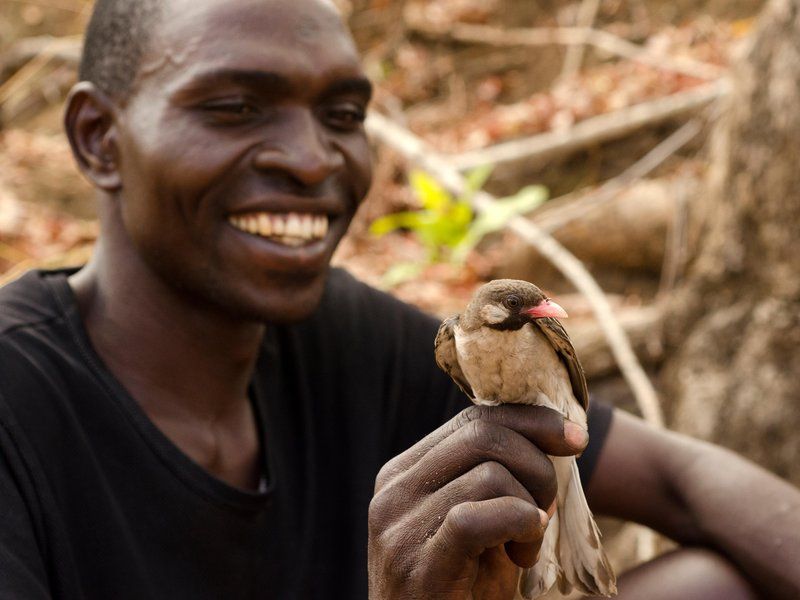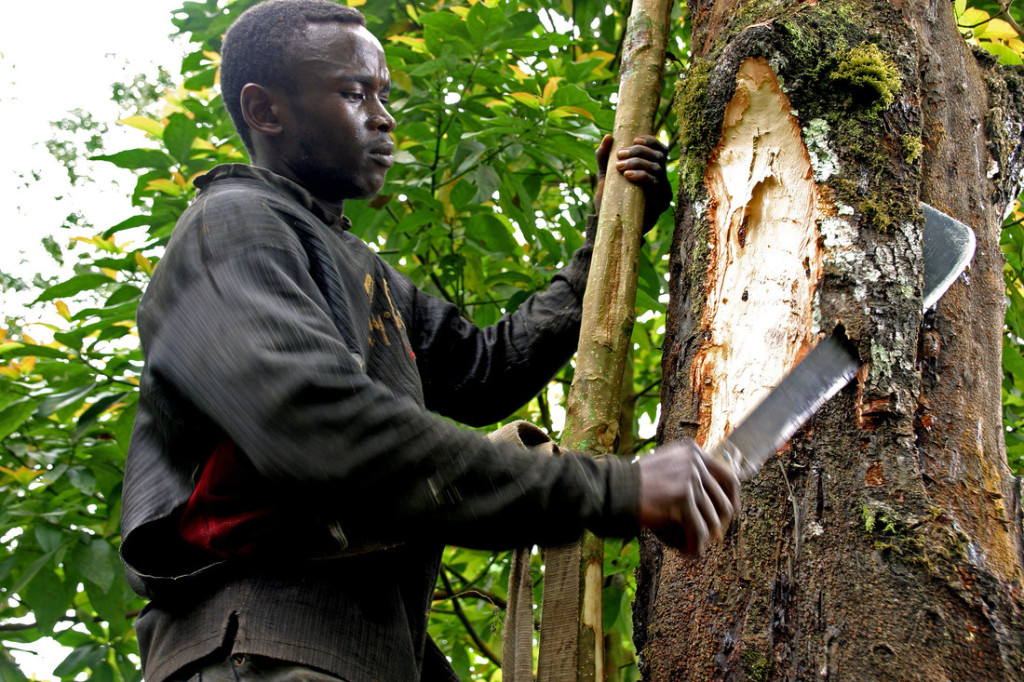The Intriguing Tale of the Honey Guide’s Secret Calls
In the dense woodlands and savannas of Africa, an ancient partnership between humans and birds has thrived for generations. The extraordinary relationship between the human inhabitants and a small, unassuming bird known as the Honey Guide (Indicator indicator) has fascinated naturalists and locals alike for centuries. What makes this avian companion so unique is its uncanny ability to guide humans to hidden beehives, offering a symbiotic alliance that benefits both species.
The Honey Guide‘s exceptional talent lies in its adeptness at locating beehives nestled in tree cavities or hidden among thick foliage. But what truly sets this bird apart is its willingness to share this bounty with other creatures, particularly humans. Its cooperative nature has led to a fascinating ritual where it forms alliances with people seeking honey.

The collaborative venture begins with a distinctive call, which locals have learned to mimic. The Honey Guide‘s call is a melodious chirp, a high-pitched trill that resonates through the African wilderness. Astonishingly, when humans imitate this call, the bird responds eagerly, recognizing the familiar sound and flying closer to communicate.
Upon establishing this auditory connection, a unique form of communication ensues. The human and bird engage in a call-and-response dialogue, each taking turns emitting the distinct call. This exchange serves as the foundation of their partnership, with the bird guiding the person towards a beehive in exchange for a share of the spoils.

Once the mutual agreement is sealed, the Honey Guide takes flight, leading the way with impressive precision. It skillfully navigates through the intricate maze of vegetation, periodically returning to ensure its human partner is following. The bird’s guidance is not merely directional but also nuanced, as it communicates through flight patterns and calls, indicating the proximity and location of the coveted beehive.
This unique relationship is steeped in mutual benefit. For the Honey Guide, the collaboration means access to leftover beeswax, larvae, and wax moths after the human harvests the honey. Meanwhile, the humans, armed with smoke and protective gear, are able to safely gather honey from the hive, thanks to the bird’s guidance.
The significance of this partnership extends beyond mere convenience. It exemplifies the harmonious coexistence between humans and wildlife, demonstrating the profound understanding and respect ancient cultures have for their natural surroundings. This partnership underscores the intricate web of interdependence that exists in nature, where cooperation transcends species boundaries for mutual gain.

However, this extraordinary relationship faces challenges in the modern era. Human encroachment, habitat loss, and changes in land use threaten the habitat of the Honey Guide, jeopardizing this age-old collaboration. Conservation efforts aimed at preserving these habitats and fostering cohabitation between humans and wildlife are crucial in ensuring the continuity of this remarkable partnership.
The story of the African Honey Guide and its unique collaboration with humans is a testament to the wonders of the natural world. It serves as a reminder of the astonishing connections that can exist between seemingly disparate species and highlights the value of mutualism in the intricate tapestry of life on Earth. As we strive to preserve and understand these alliances, we also preserve the rich tapestry of cultural and natural heritage that defines our world.
